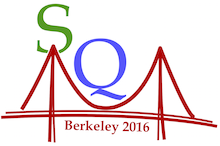Speaker
Vitalii Ozvenchuk
(IFJ PAN)
Description
The first experimental results from pPb collisions at 5 TeV on the particle yields and azimuthal anisotropies as function of transverse momentum show a very similar behavior in comparison to the observations in heavy-ion collisions, where the quark-gluon plasma (QGP) can be produced. Such pPb results have indeed been explained in the framework of models including a QGP phase such as EPOS3. Heavy-flavor particles have been suggested as a good probe to study the properties of the QGP. Heavy quarks (HQ) are produced in the initial hard nucleon-nucleon scatterings and their thermal equilibration time is larger than the QGP lifetime. In this contribution we study the D-meson observables in pPb collisions at 5 TeV as it offers a complementary perspective with respect to light hadrons production.
We calculate the nuclear modification factor of D mesons in pPb collisions using the EPOSHQ model. It couples a Monte Carlo propagation of HQ to the 3+1 dimensional fluid dynamical evolution of the QGP from EPOS3 initial conditions, which combine pQCD calculations of the hard scattering with the Gribov-Regge theory. HQ that in EPOS3 can be produced during the spacelike cascade, the born process and the partonic shower, interact with plasma partons by either elastic or radiative collisions. The HQ form hadrons via coalescence or fragmentation on the hypersurface of constant temperature T=155 MeV.
We further couple our model with UrQMD to study the influence of hadronic rescatterings on heavy-flavor observables in heavy-ion collisions at LHC energies. The cross sections between D mesons and light hadrons used in UrQMD are calculated in effective models including the chiral and heavy-quarlk-spin symmetries in Lagrangian as well as the exact satisfaction of the unitarity condition of the scattering matrix.
Author
Vitalii Ozvenchuk
(IFJ PAN)
Co-authors
Klaus Werner
Marlene Nahrgang
Pol Gossiaux
(Subatech)
joerg aichelin
(Subatech/CNRS)
